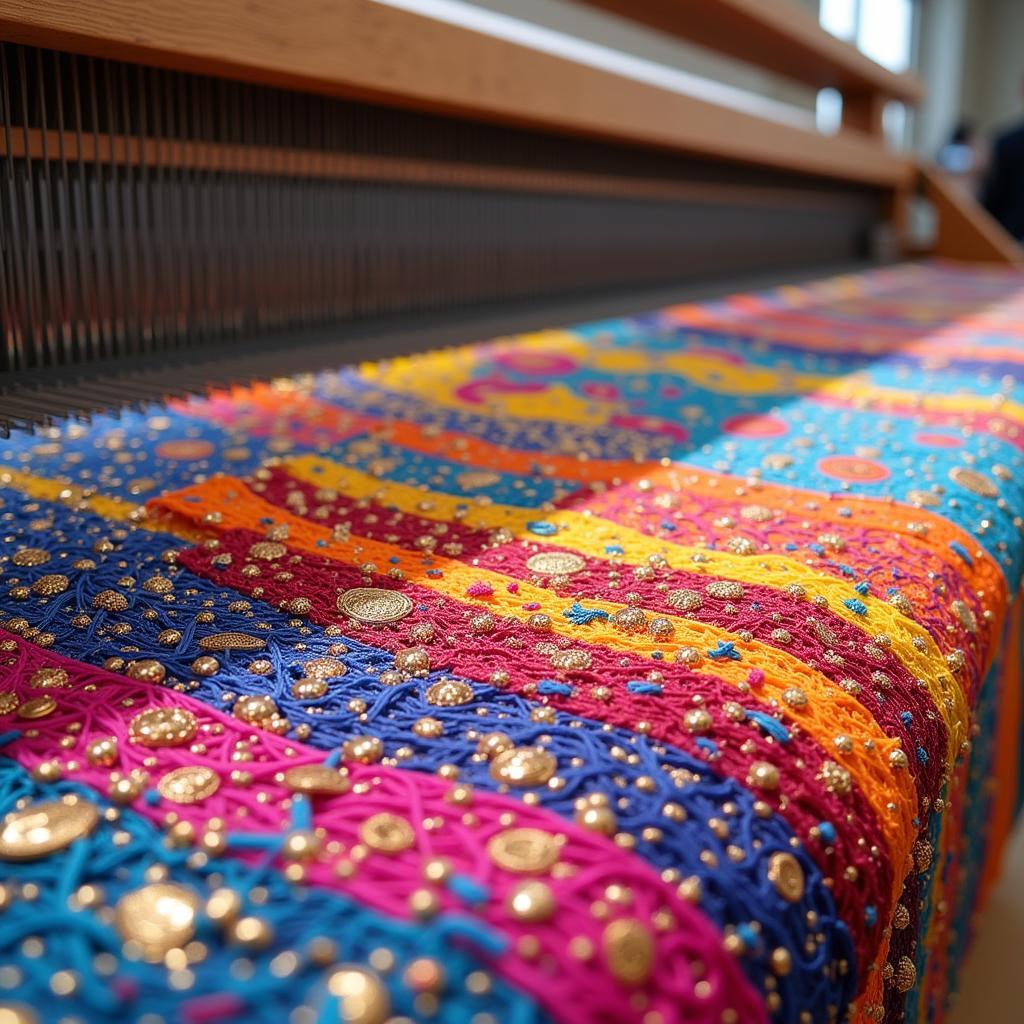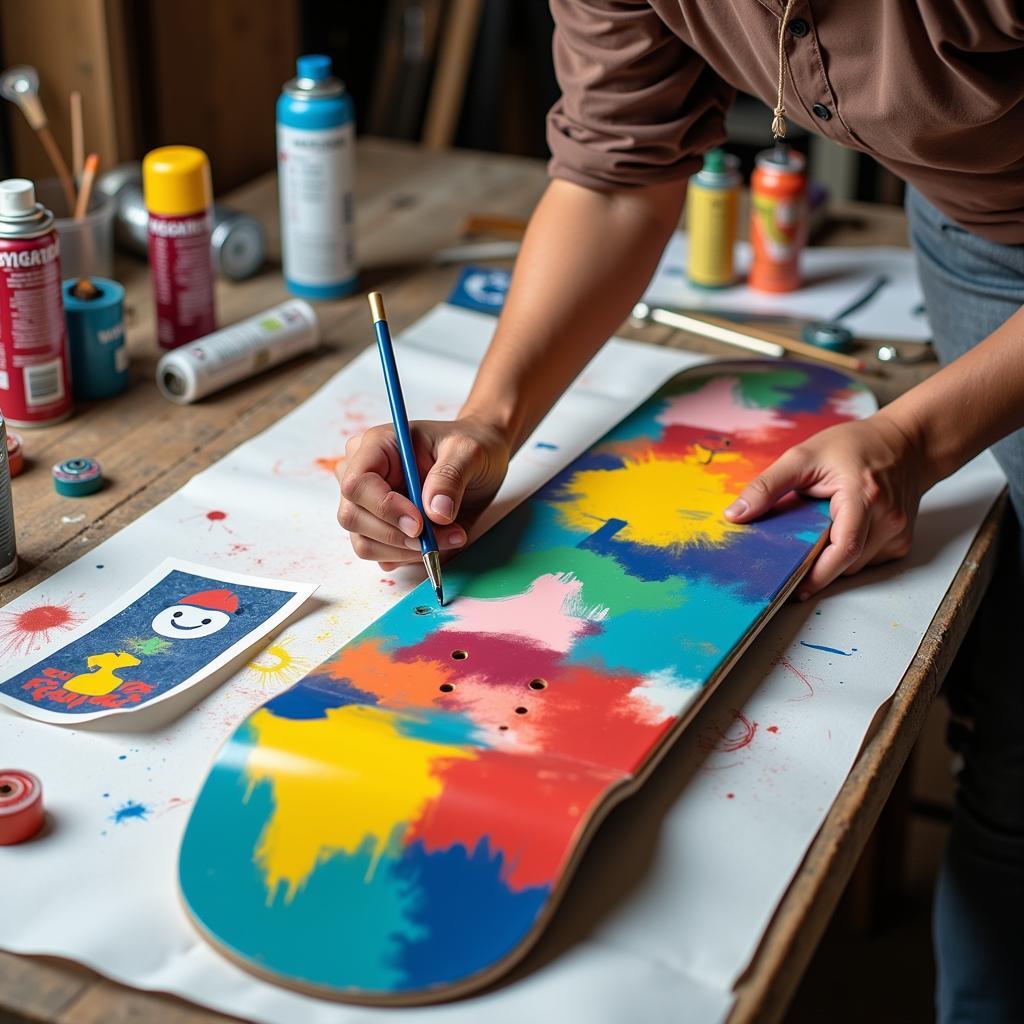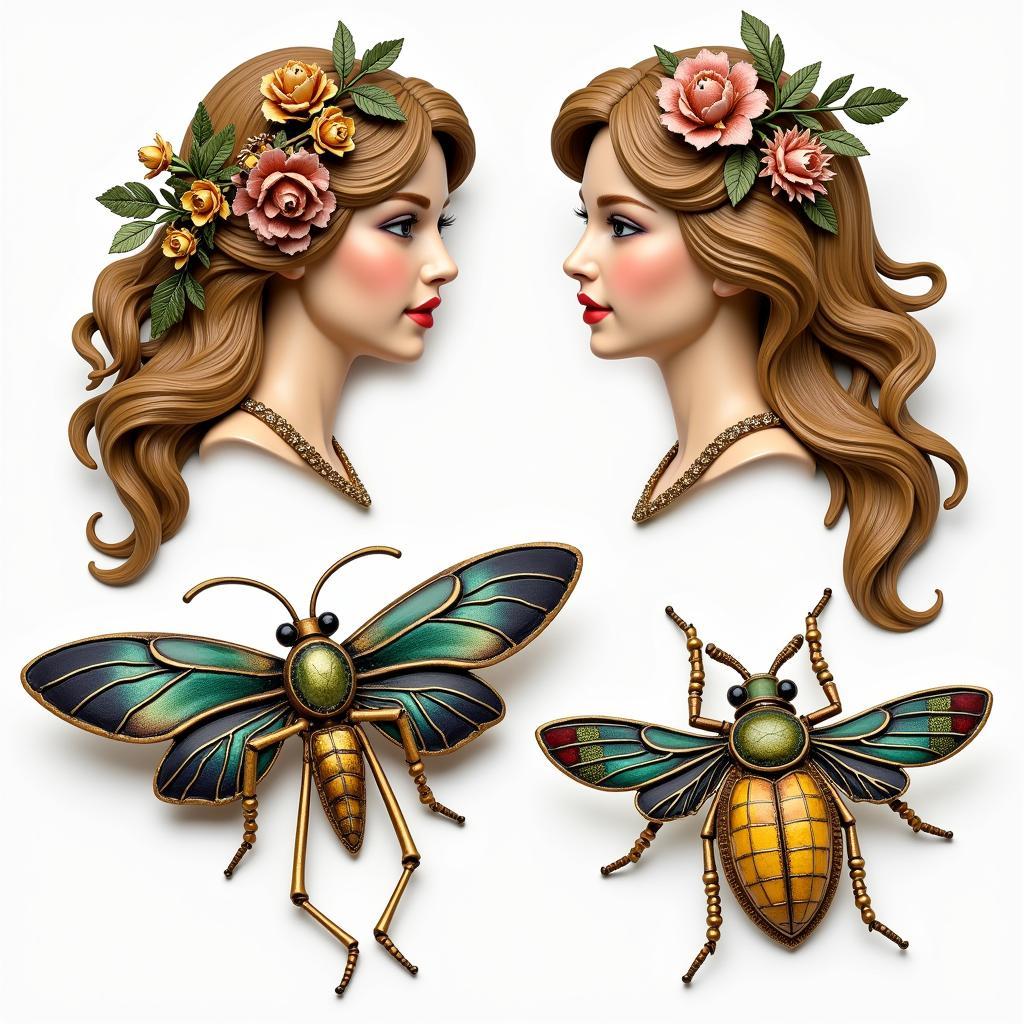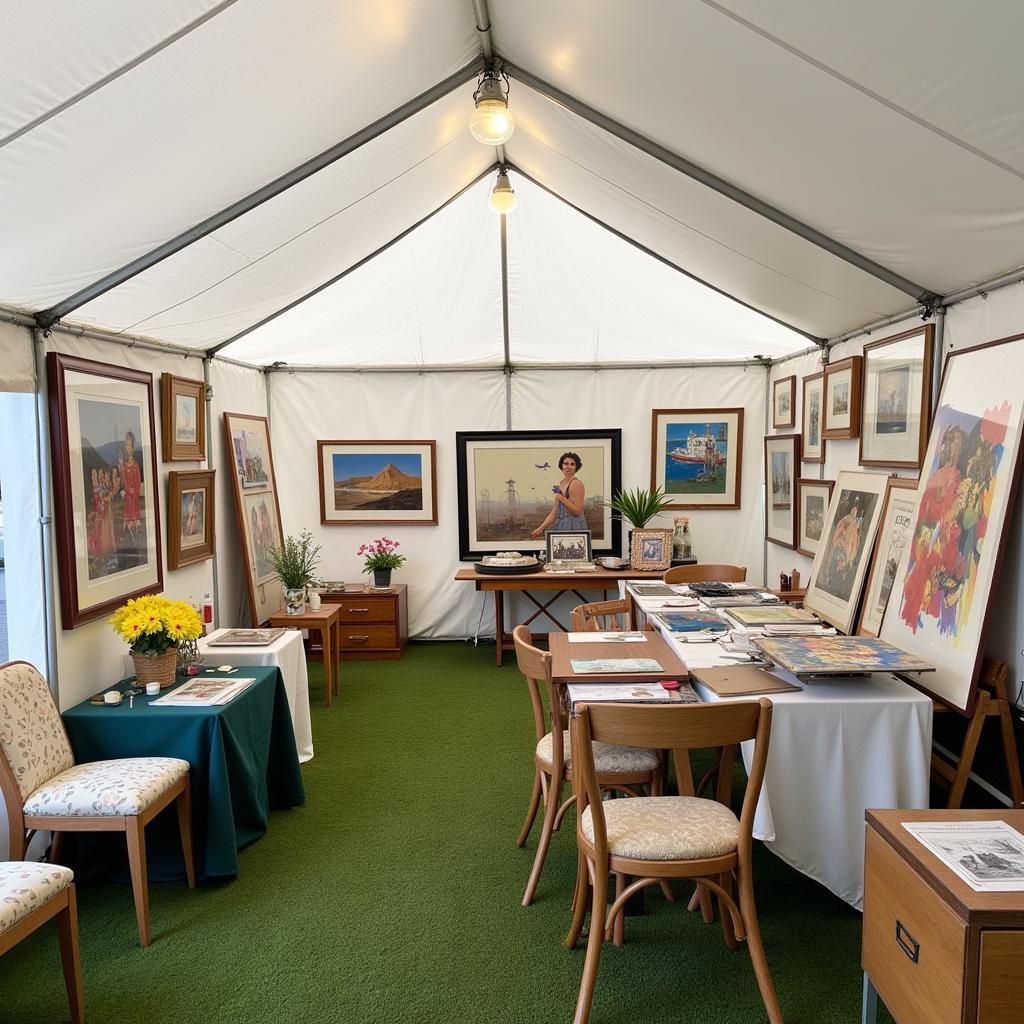Modern Tapestry Art: Weaving Technology and Tradition
Modern Tapestry Art is experiencing a renaissance, blending traditional weaving techniques with contemporary digital design. This revival allows artists to push the boundaries of the medium, creating stunning visual experiences that resonate with a modern audience. From intricate wall hangings to innovative textile installations, modern tapestry art offers a unique way to explore texture, color, and narrative in a digitally driven world.  Modern Tapestry on a Digital Loom
Modern Tapestry on a Digital Loom
Exploring the Evolution of Modern Tapestry Art
Tapestry weaving, an ancient art form, has evolved significantly over the centuries. Originally used for functional purposes like insulation and decoration, tapestries became synonymous with luxury and storytelling during the Middle Ages. These intricate woven narratives adorned the walls of castles and cathedrals, showcasing historical events, mythological scenes, and religious iconography. Today, modern tapestry art retains its narrative power while embracing innovative materials, techniques, and digital design possibilities. tapestry framed art This evolution has opened up new avenues for artistic expression, allowing contemporary artists to reimagine the ancient art form in a distinctly modern context.
What Makes Modern Tapestry Art Unique?
Modern tapestry art distinguishes itself through its seamless integration of technology and tradition. Artists are now using digital software to design intricate patterns and color gradients, then translating these designs onto specialized looms, including computerized Jacquard looms, which offer unprecedented precision and control over the weaving process. This fusion of digital design and traditional craftsmanship allows for complex and detailed imagery that would have been impossible to achieve in the past. It also opens up exciting possibilities for exploring new materials and textures, further pushing the boundaries of tapestry art.
Digital Design and its Impact on Modern Tapestry
Digital tools have revolutionized the creative process for tapestry artists. Software like Adobe Photoshop and specialized textile design programs allow artists to experiment with color, texture, and composition in a virtual environment before translating their designs onto physical threads. This digital workflow enables greater control over the final product and facilitates the creation of intricate patterns and subtle color transitions.
How is Technology Changing the Way Tapestries are Made?
The introduction of computerized Jacquard looms has been a game-changer for modern tapestry weaving. These looms are controlled by digital instructions, allowing for intricate patterns and designs to be woven with incredible speed and accuracy. art on the avenue west reading This technology has not only streamlined the production process but also allowed artists to explore more complex and detailed imagery. Furthermore, digital tools have made it easier to collaborate with other artists and designers, fostering a sense of community and innovation within the tapestry world.
Materials and Textures in Modern Tapestry Art
Modern tapestry artists are experimenting with a wide range of materials, going beyond the traditional wool and silk. Materials like metallic threads, synthetic fibers, and even recycled plastics are being incorporated into contemporary tapestries, adding new dimensions of texture and visual interest. This exploration of unconventional materials reflects a broader trend in contemporary art towards sustainability and experimentation. lady luck art The use of diverse materials not only enhances the aesthetic appeal of modern tapestries but also adds layers of meaning and symbolism.
What Materials are Commonly Used in Modern Tapestries?
While traditional materials like wool and silk remain popular, modern tapestry artists are increasingly incorporating a wider range of materials into their work. This includes metallic threads, which add shimmer and depth, synthetic fibers, known for their durability and vibrant colors, and even recycled materials like plastic, promoting sustainability and raising awareness about environmental issues. This expansion of the material palette reflects the dynamic nature of modern tapestry art.
The Rise of Tapestry in Contemporary Art
Modern tapestry is experiencing a resurgence in popularity, gracing galleries, museums, and private collections around the world. This renewed interest can be attributed to several factors, including the growing appreciation for handmade objects, the desire for unique and personalized art pieces, and the increasing recognition of tapestry as a legitimate contemporary art form.
“The resurgence of tapestry in contemporary art speaks to a broader shift towards embracing craft and tradition in a digitally saturated world,” says acclaimed textile artist, Eleanor Vance. “It’s a medium that allows for both intricate detail and powerful storytelling, resonating with audiences on multiple levels.”
Another expert, Dr. James Weaver, adds, “Modern tapestry art blurs the lines between fine art and craft, challenging traditional notions of what constitutes ‘art’ and pushing the boundaries of the medium in exciting new directions.” queen wall art
Conclusion: The Future of Modern Tapestry Art
Modern tapestry art represents a dynamic intersection of tradition and innovation. By embracing digital technologies while staying true to the core principles of weaving, artists are creating stunning works that capture the spirit of our times. The continued exploration of new materials, techniques, and digital tools ensures that modern tapestry art will continue to evolve and inspire for generations to come. house of the dragon wall art
Need assistance with your modern tapestry art project? Contact us at Phone Number: 02462573573, Email: danteum@gmail.com or visit us at Savico Megamall, 7-9 Đ. Nguyễn Văn Linh, Gia Thụy, Long Biên, Hà Nội 10000, Việt Nam. We have a 24/7 customer service team ready to help.



